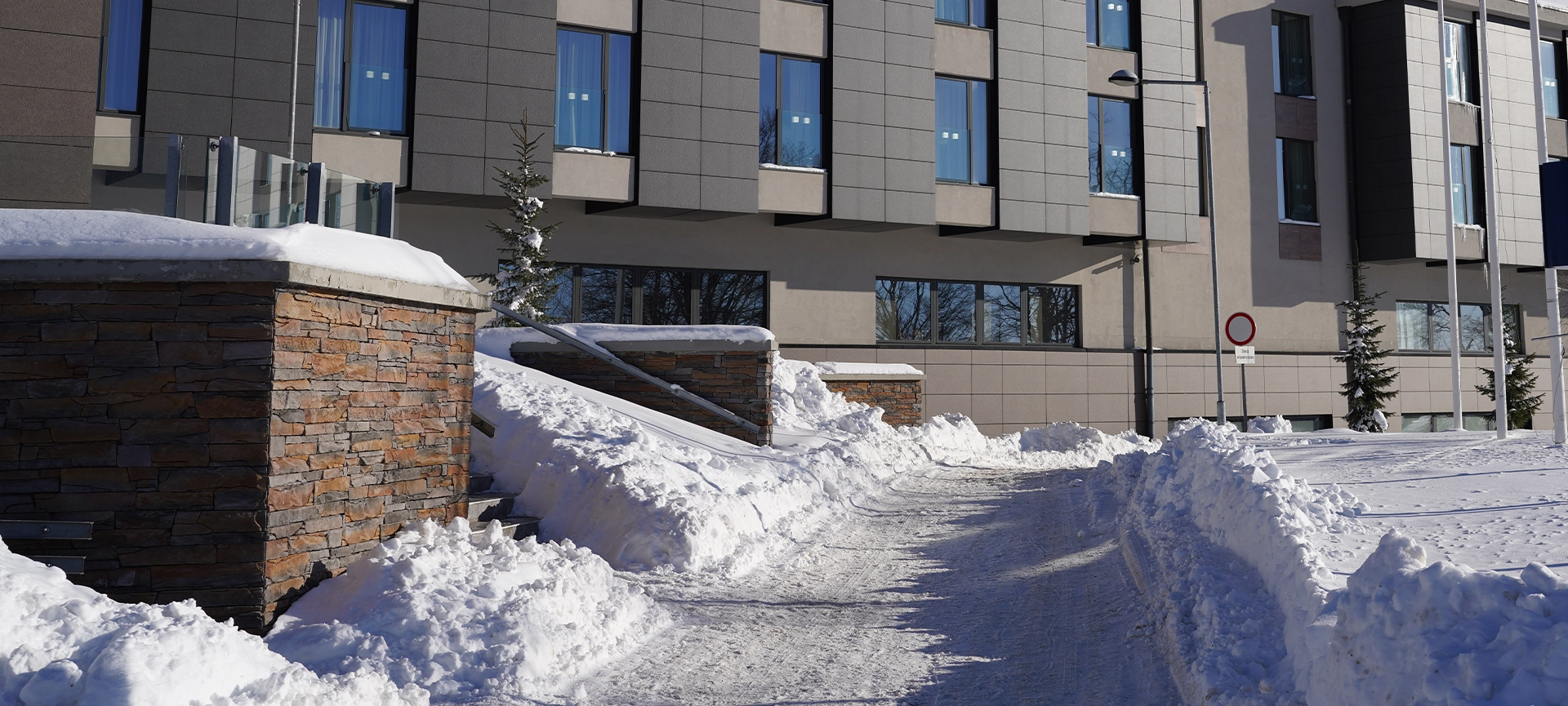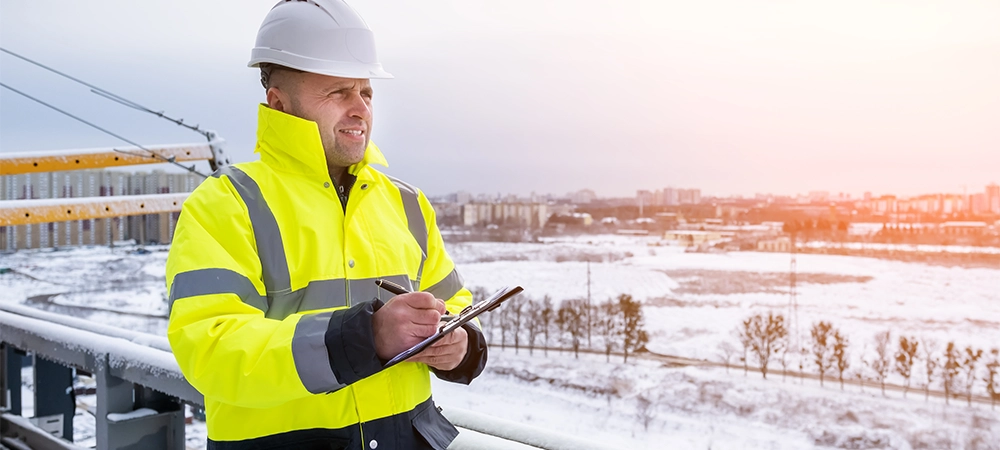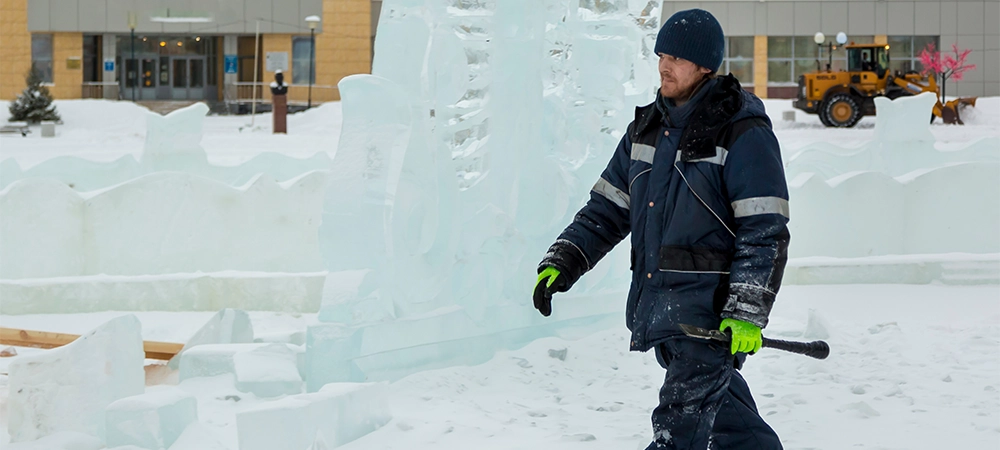
Winter in the Greater Toronto Area (GTA) and York Region can put a serious strain on businesses. Parking lots fill with snow, entrances become slippery, and customer access is limited if the right maintenance isn’t in place.
For business owners, signing a snow removal contract is more than a matter of convenience; it’s a safeguard against lost revenue, safety risks, and legal liability.
The challenge lies in knowing what to include in the contract. Some agreements look comprehensive but leave gaps that cost you time and money when storms hit. To avoid surprises, here are the top five features every business should insist on before signing a snow removal contract.
Related Article: What’s Included in a Private Road Snow Removal Service?
1. A Clear Scope of Work
The scope of work forms the backbone of your contract. It should leave no doubt about what areas will be serviced and how. Ambiguity can lead to disputes, missed areas, and unsafe conditions for staff and visitors.
What to look for:
- Defined service areas: Entrances, walkways, loading docks, fire routes, accessible parking, and employee areas should be identified.
- Types of services: Specify whether snow will be plowed, shovelled, blown, or hauled away.
- De-icing coverage: Salt, sand, or liquid brine should be noted, along with where and how often these will be applied.
- Special conditions: If your business requires priority servicing (e.g., 24/7 operations, medical facilities, or retail stores that open early), this must be included in writing.
Why it matters: Without clear definitions, a contractor might plow the main lot but leave walkways or loading bays untouched, creating liability hazards. A detailed scope of work eliminates assumptions and ensures accountability.
2. Defined Response Times
Snow doesn’t wait, and neither should your contractor. A contract with vague wording like “as soon as possible” can leave your business vulnerable when customers or staff arrive to find unplowed lots.
What to look for:
- Trigger depth: Many contracts specify snow removal begins once accumulation reaches 2–5 cm.
- Response guarantees: Look for clauses such as “service within X hours of snowfall stopping” or “continuous service during ongoing storms.”
- After-hours response: Businesses that open early or operate overnight need assurance that snow will be cleared before peak activity.
Why it matters: Defined timelines reduce downtime. For instance, a retail plaza that opens at 7 a.m. can’t afford to wait until 10 a.m. for plowing. Delays can deter customers and even result in lost revenue during the busiest winter shopping periods.
Related Article: How Snow Removal Services Help You Stay ADA Compliant in Winter
3. Safety and Liability Provisions
Slip-and-fall claims are among the most common winter liabilities for businesses. Courts often consider whether the property owner took “reasonable steps” to maintain safe conditions. Your snow removal contract should clearly outline safety protocols.
What to look for:
- De-icing details: Frequency, materials used, and specific areas to be treated.
- Record-keeping: Contractors should provide service logs showing dates, times, and actions taken. These logs are invaluable if a claim arises.
- Insurance coverage: Verify that the contractor carries liability insurance and workers’ compensation. This protects your business if there’s damage or an injury during service.
- Site inspections: Provisions for mid-storm visits or follow-up inspections during temperature swings are also worth including.
Why it matters: If someone slips on untreated ice, you may be held responsible even if a contractor was hired. Proper documentation and safety measures in your contract strengthen your defence in the event of a lawsuit.

4. Transparent Pricing Structure and Extra Costs
Winter storms are unpredictable, and so are the costs if your contract isn’t structured properly. Businesses often budget for snow removal only to find hidden charges appear later.
What to look for:
- Payment models: Options typically include per-push (charged per visit), seasonal flat rates, or hybrid models. Seasonal rates provide predictable costs, while per-push can benefit years with lighter snowfall.
- Extras spelled out: Snow hauling, loader work, ice melt applications, or clearing after extreme storms should have clear pricing.
- Budget alignment: Compare contract terms with historical snowfall averages in the GTA to see which model makes the most financial sense.
Why it matters: A retail complex once signed a per-push contract expecting a mild winter. When several heavy storms hit, costs doubled their budget. A clear pricing structure aligned with your risk tolerance prevents nasty surprises.
Related Article: Do You Need 24/7 Snow Monitoring for Your Commercial Site?
5. Communication and Monitoring Systems
Snow removal requires strong coordination. If a storm hits overnight, you need reassurance that crews are on site without chasing updates. Modern technology has made communication easier, but it must be built into your contract.
What to look for:
- 24/7 contact line: Emergencies don’t wait until business hours.
- Service confirmations: Texts, emails, or app notifications after each visit.
- GPS tracking: Many contractors now use GPS to document when and where their crews work.
- Dedicated account manager: Having one point of contact simplifies communication, especially for multi-site businesses.
Why it matters: Businesses that rely on customer traffic—such as shopping centres or restaurants—can’t risk uncertainty. Communication systems provide transparency and peace of mind that services are being delivered as promised.
Related Article: 5 Benefits of Hiring a Professional for Snow Plowing Private Roads
Why These Features Protect Your Business
A snow removal contract is more than a maintenance plan; it’s a safeguard for your operations. Without these five features, businesses risk:
- Lost revenue due to inaccessible sites.
- Higher liability exposure from slips and falls.
- Frustration with unexpected costs.
- Reputational damage occurs when customers or staff face unsafe conditions.
By ensuring your contract addresses scope, timelines, safety, pricing, and communication, you protect both people and profits during the harshest winter months.

Work with a Contractor Who Covers All the Essentials
At Green Side Up Contracting, we provide commercial snow removal services that are built on clarity, accountability, and customer safety. Businesses in the GTA and York Region rely on us for:
- Rapid response times.
- Comprehensive plowing and de-icing.
- Detailed service logs and communication.
- Predictable seasonal pricing.
Don’t leave winter safety to chance. Contact Green Side Up Contracting today for a free consultation and a snow removal contract that gives you peace of mind.
Frequently Asked Questions
1. How early should I sign a snow removal contract?
It’s best to finalize contracts in late summer or early fall to secure priority service before providers are fully booked.
2. What’s the difference between seasonal and per-push contracts?
Seasonal contracts offer a flat rate for the entire winter, while per-push contracts charge for each service visit. The best choice depends on snowfall averages and your budget.
3. Can I request priority service during major storms?
Yes, but it should be specified in your contract. Businesses with high-traffic sites often pay for guaranteed priority servicing.
4. Do I need proof of insurance from the contractor?
Absolutely. Always request a certificate of insurance to confirm liability and workers’ compensation coverage.
5. What happens if snow piles block visibility or access?
Your contract should state whether snow will be relocated on-site or hauled away. Hauling usually comes with extra costs.
6. Are environmentally friendly de-icing options available?
Yes. Contractors can use alternatives such as sand, brine, or calcium magnesium acetate. Ask about eco-friendly options if this aligns with your company’s sustainability goals.
7. How can I confirm work was actually done?
Request service logs, GPS tracking reports, or time-stamped photos as part of your contract.
8. What should be included for safety compliance?
In addition to plowing and salting, look for clauses requiring clear fire lanes, accessibility compliance, and proper signage during severe conditions.
9. Can I adjust contract terms mid-season?
Some providers allow adjustments for unexpected conditions, but these should be negotiated in advance and written into the agreement.
10. Why choose a local contractor over a national chain?
Local providers often respond faster, know municipal bylaws, and can provide more personalized service. For GTA businesses, this local expertise is invaluable.
